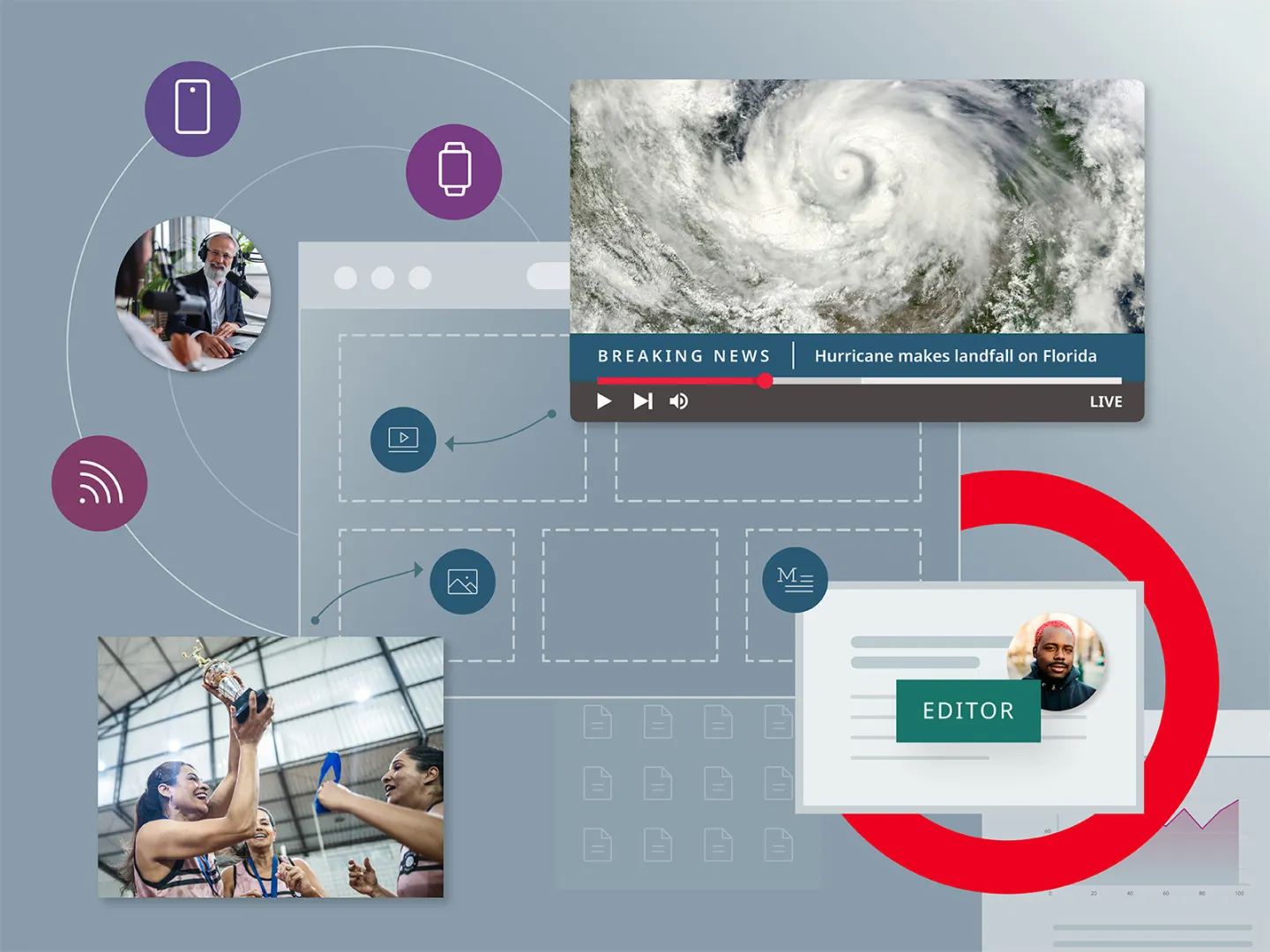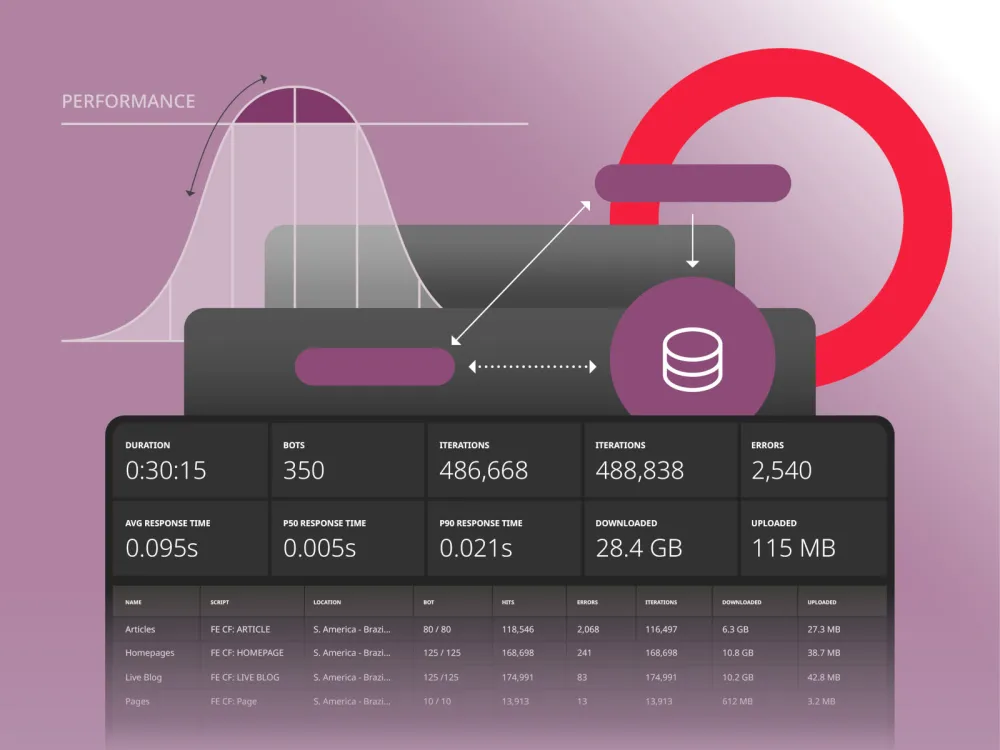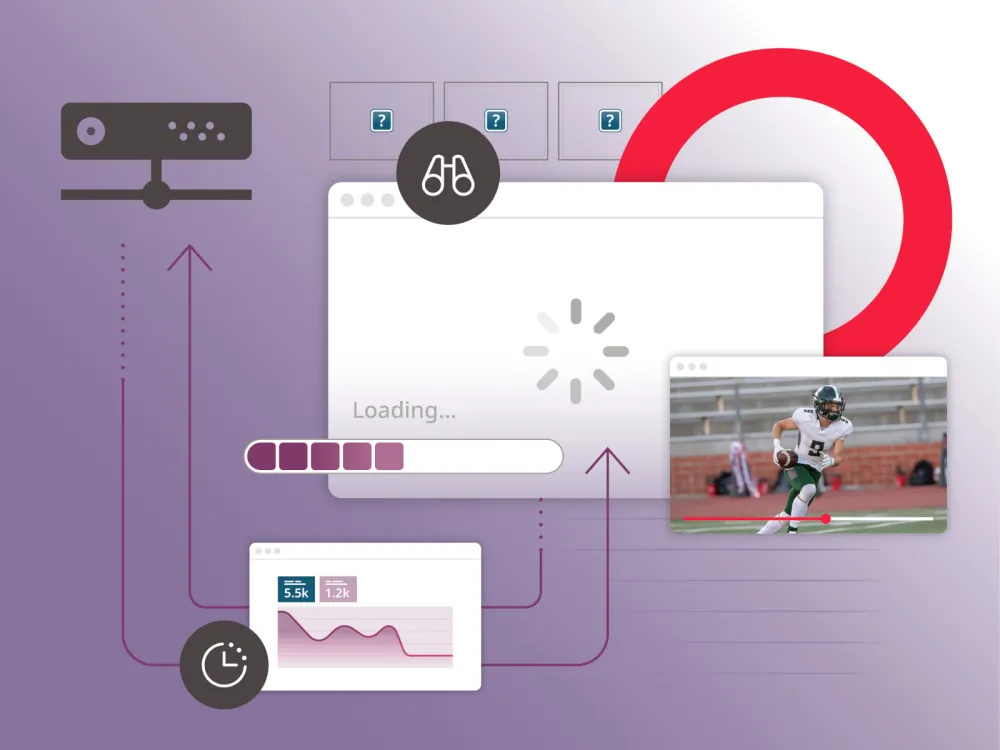In the world of broadcast media, delivering content efficiently across multiple platforms while managing massive video libraries is essential to staying competitive. A content management system (CMS) for broadcasters is more than just a back-end tool — it’s the engine that powers seamless content delivery, enhances audience engagement and streamlines operations. From live streaming to multi-platform, a robust CMS ensures broadcasters can meet their viewers wherever they are, with the content they want when they want it. Let’s explore how key CMS features are shaping the broadcast industry, backed by real-world examples from Brightspot-supported projects.
Brightspot is the piece of software sitting between every system we have. It is the digital brain of Univision.
Broadcast CMS feature #1 - Multi-channel publishing
In today’s fragmented media landscape, broadcasters must promote and deliver content across websites, social media, mobile apps, streaming services and audio platforms. The ability to manage content across multiple platforms from a single CMS is not just convenient — it’s critical for staying relevant in a fast-moving industry.
- Why it’s essential: Audiences expect instant access to content on the platform of their choice, and broadcasters must meet that demand to maintain engagement.
- Example: NBC Sports uses Brightspot’s multi-channel publishing capabilities to ensure that their video and audio content is published simultaneously across web, mobile and OTT platforms. This broad reach keeps their audience engaged no matter how they consume content.
Broadcast CMS feature #2 - Multimedia management
Managing large digital asset libraries and distributing content efficiently is at the heart of broadcast operations. A CMS that can manage disparate media libraries ensures broadcasters can deliver high-quality content to audiences across multiple streaming platforms.
- Why it’s essential: In a video-first world, the ability to manage, organize and distribute video content seamlessly is a core necessity for broadcasters.
- Example: WGBH, one of the largest PBS content producers, leverages Brightspot to streamline their video management processes, enhancing the efficiency of content delivery.
Broadcast CMS feature #3 - AI
Generative AI is emerging as a powerful tool to support and optimize content creation, including ideation, automation, personalization and translation. AI is also a time-saving factor for translations, transcripts or content variations. This is especially valuable as teams are tasked with managing more channels while working with fewer resources.
- Why it’s essential: Resource-constrained editorial teams can use AI to refine ideas, add SEO descriptions or query content archives. AI is also a time-saving factor for translations, transcripts or content variations. However, it’s crucial to have a CMS where AI is seamlessly integrated, tracked and used to complement and enhance the editorial team’s workflow, rather than replace it.
- Example: SBS Australia, a hybrid-funded public broadcaster, uses Brightspot’s multisite content-management capabilities to organize and present its content across a wide variety of formats and languages. With support for 70 languages — including Cantonese, Greek, Hmong and Somali — SBS is able to engage its diverse audience more effectively. Brightspot’s flexible roles and permissions system makes it easy to manage translations by program, brand and language.
Broadcast CMS feature #4 - Persistent audio and video players
Keeping audiences engaged means providing a continuous content experience across devices and platforms. Persistent audio and video players ensure that viewers or listeners can stay connected to content without interruptions.
- Why it’s essential: Offering uninterrupted content experiences keeps viewers engaged for longer periods, increasing overall audience retention.
- Example: Virginia Public Media utilizes Brightspot’s persistent player to ensure that their audience can switch between pages or devices while continuing to listen to live streams or podcasts, keeping engagement levels high.
Broadcast CMS feature #5 - Scalability and future-proofing
In an industry driven by rapid content growth but in the face of resource constraints, scalability is non-negotiable. Broadcasters need a CMS that not only meets today’s demands but can also scale to handle tomorrow’s content needs while integrating new technologies such as AI-driven analytics.
- Why it’s essential: Broadcasters must ensure their CMS can grow alongside their digital presence without compromising performance or flexibility.
- Example: TV Azteca uses Brightspot’s scalable architecture to expand its content offerings across multiple regions while maintaining the flexibility to integrate new features as their needs evolve.
Broadcast CMS feature #6 - Automated scheduling and workflow management
In fast-paced broadcast environments, automation is a game-changer. Broadcasters need tools that enable them to automate publishing schedules and manage workflows efficiently to ensure content is delivered on time every time.
Our editorial team can produce 2x the amount of content now that we have Brightspot.
- Why it’s essential: Automated workflows help broadcasters reduce manual tasks, streamline processes and ensure timely publication — critical in fast-paced environments like news and sports broadcasting.
- Example: E.W. Scripps stations rely on Brightspot’s automated scheduling and workflow tools to publish breaking news and video content quickly, keeping pace with the fast-moving nature of broadcast news.
Broadcast CMS feature #7 - Audience personalization
To keep viewers engaged, broadcasters need to offer personalized content experiences based on viewer behavior and preferences. Personalization tools within a CMS enable broadcasters to tailor content delivery to individual audience segments, boosting engagement and retention.
- Why it’s essential: Personalizing content for specific audiences increases engagement, as viewers are more likely to return to a platform that consistently delivers content relevant to their interests.
- Example: PBS SoCal uses Brightspot’s personalization tools to curate a homepage experience that reflects viewer preferences, resulting in higher engagement and longer time spent on their platform.
Broadcast CMS feature #8 - Modular content capabilities
With vast archives of video, audio and written content, broadcasters need to manage and reuse their existing content efficiently. A CMS with robust modular content capabilities allows broadcasters to repurpose content quickly and easily across different platforms.
- Why it’s essential: Reusing archived content helps broadcasters maximize their content investment and maintain consistency across channels.
- Example: Univision leverages Brightspot’s modular-content publishing features to repurpose old TV segments for online and mobile platforms, helping them maintain a consistent presence across all digital touchpoints.
Broadcast CMS feature #9 - Paywalls and monetization
As digital revenue models evolve, more broadcasters are turning to paywalls to monetize their premium content. A CMS with flexible paywall integrations allows broadcasters to implement dynamic, metered or subscription-based paywalls, offering new revenue opportunities.
- Why it’s essential: Monetizing content through paywalls is a crucial strategy for broadcasters as they seek to diversify revenue streams beyond traditional advertising.
- Example: A national broadcaster uses Brightspot’s dynamic paywall integration to monetize premium video content across their website and mobile platforms, balancing revenue generation with audience engagement.
Broadcast CMS feature #10 - Data-driven insights and analytics integrations
In order to refine content strategies and improve audience engagement, broadcasters need access to real-time data. A CMS that integrates seamlessly with analytics platforms gives broadcasters the insights they need to track content performance and optimize programming.
- Why it’s essential: Data-driven decision-making allows broadcasters to optimize their content strategies, ensuring they are delivering what their audience wants when they want it.
- Example: SBS Australia uses Brightspot’s real-time analytics integrations to track audience engagement and adjust their content strategies accordingly, boosting both engagement and advertising revenue.















